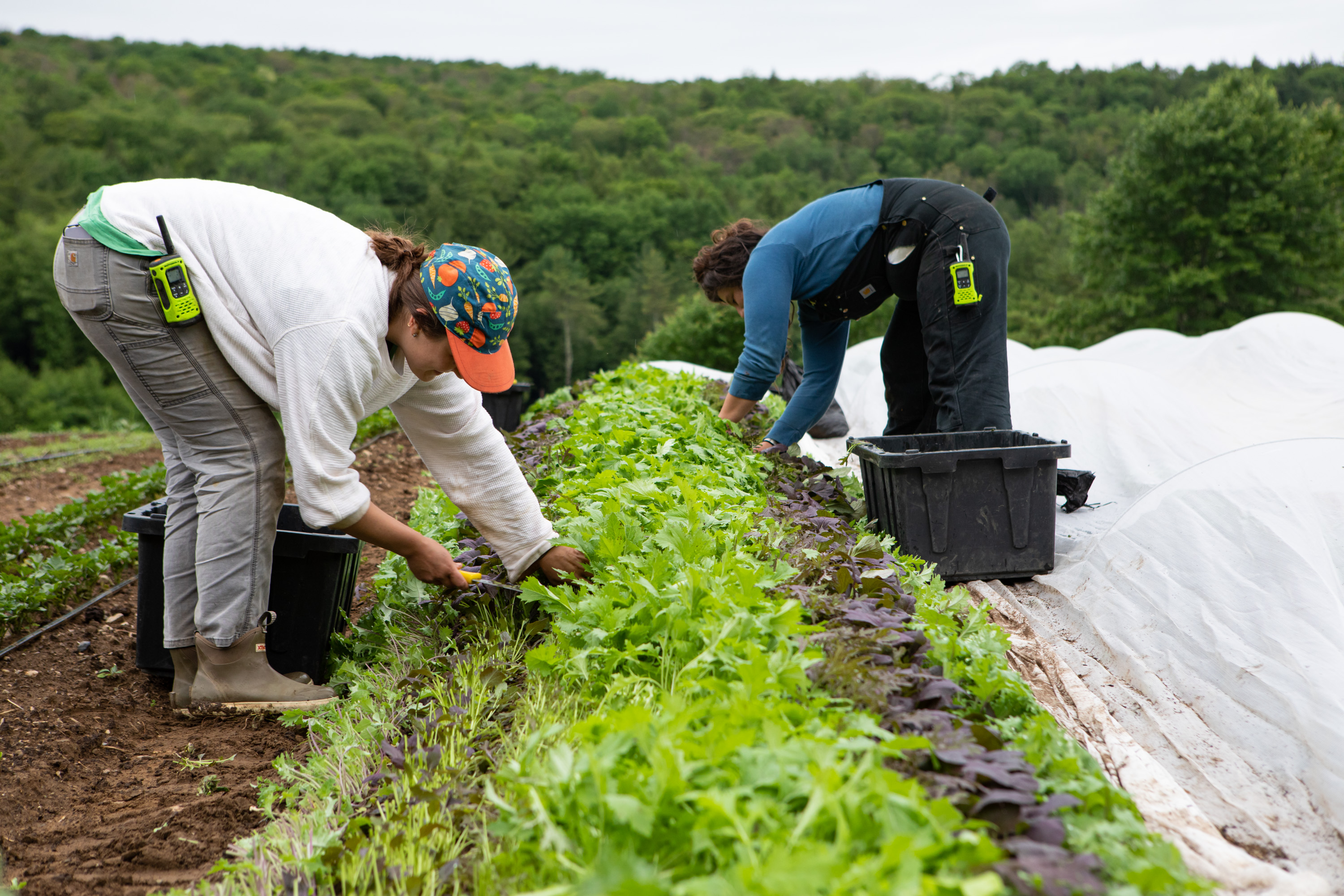
On-farm food safety tips for fruit & vegetable growers
By Ollie Cultrara, VT Agency of Agriculture, Food & Markets
Produce safety means protecting fruits and vegetables from becoming contaminated with harmful pathogens. Many fruits and veggies are eaten raw, so we can’t rely on cooking to kill potential germs. These key steps help maintain your product’s integrity on its way to your customers.
Pre-harvest assessment
Never harvest produce that is visibly contaminated with animal feces (poop). Before and during harvesting, look for signs like animal droppings, crop damage, or extensive animal tracks. Consider integrating this visual assessment into existing routines, such as scouting for pests or checking crop maturity. Communicate about any areas that should not be harvested. One simple method is flagging to indicate a no-harvest zone.
Wash your hands
Everyone must wash their hands before handling produce. The UVM Extension Produce Safety Team can help you set up a convenient portable or permanent handwashing station that includes clean water, soap, and paper towels.
Empower your crew
Train workers to spot things that could contaminate produce, like feces or dirty harvest containers, and explain how to address issues that arise. Set expectations for cleaning harvest equipment, scouting for damage and feces, and not harvesting produce that could be contaminated. Reward or acknowledge positive practices like handwashing to reinforce good habits.
Next steps
The Food Safety Modernization Act (FSMA) Produce Safety Rule (PSR) sets a standard for preventing contamination before and during harvesting. Whether or not your farm is subject to the PSR requirements, the Vermont Agency of Agriculture’s Produce Program can help you take the next step in developing a culture of food safety on your farm. Contact the Vermont Produce Program at AGR.FSMA@vermont.gov, (802) 461-5128. For more information, visit our Produce Safety Resources page.

